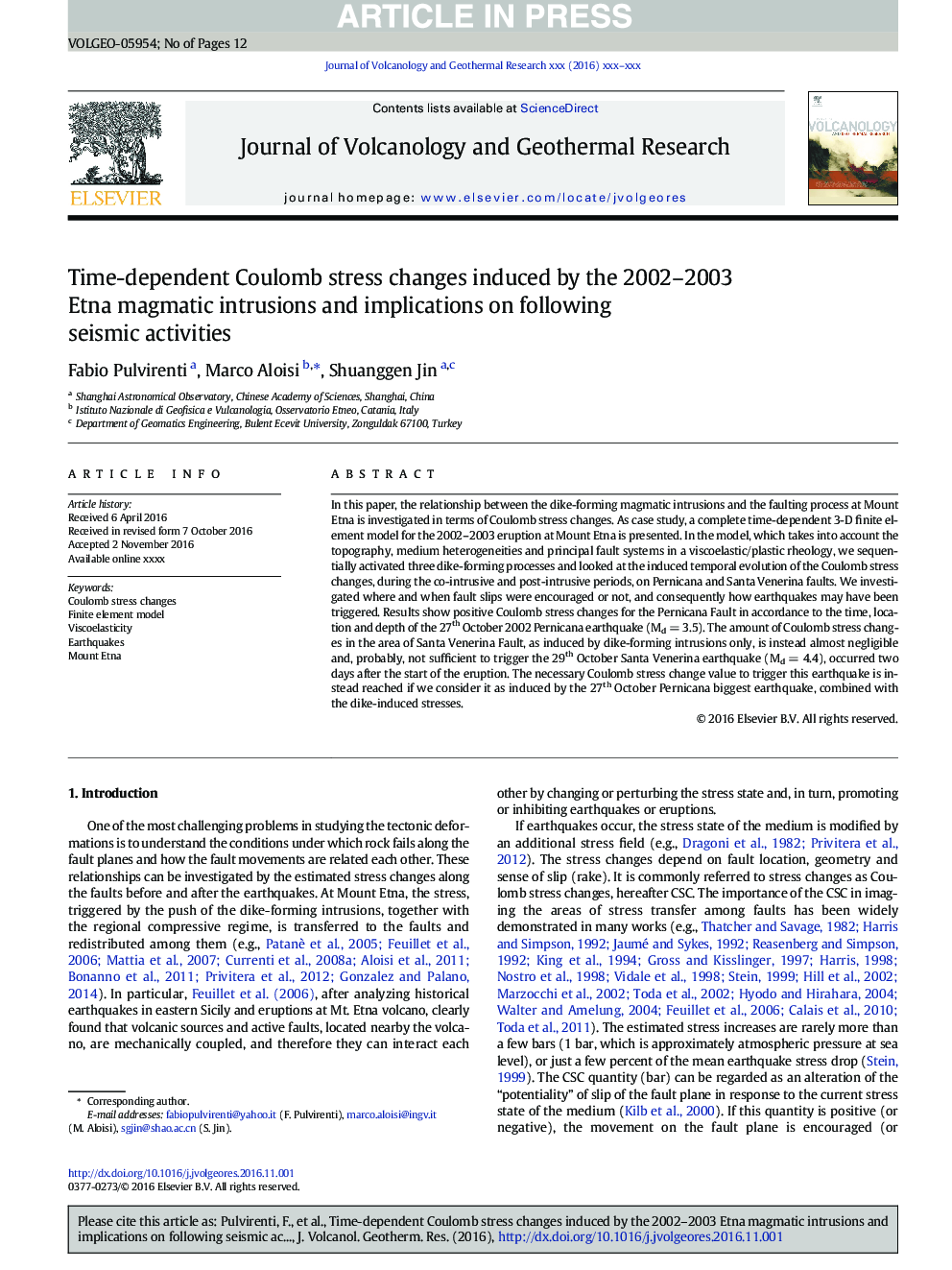| Article ID | Journal | Published Year | Pages | File Type |
|---|---|---|---|---|
| 5783727 | Journal of Volcanology and Geothermal Research | 2017 | 12 Pages |
Abstract
In this paper, the relationship between the dike-forming magmatic intrusions and the faulting process at Mount Etna is investigated in terms of Coulomb stress changes. As case study, a complete time-dependent 3-D finite element model for the 2002-2003 eruption at Mount Etna is presented. In the model, which takes into account the topography, medium heterogeneities and principal fault systems in a viscoelastic/plastic rheology, we sequentially activated three dike-forming processes and looked at the induced temporal evolution of the Coulomb stress changes, during the co-intrusive and post-intrusive periods, on Pernicana and Santa Venerina faults. We investigated where and when fault slips were encouraged or not, and consequently how earthquakes may have been triggered. Results show positive Coulomb stress changes for the Pernicana Fault in accordance to the time, location and depth of the 27th October 2002 Pernicana earthquake (Md = 3.5). The amount of Coulomb stress changes in the area of Santa Venerina Fault, as induced by dike-forming intrusions only, is instead almost negligible and, probably, not sufficient to trigger the 29th October Santa Venerina earthquake (Md = 4.4), occurred two days after the start of the eruption. The necessary Coulomb stress change value to trigger this earthquake is instead reached if we consider it as induced by the 27th October Pernicana biggest earthquake, combined with the dike-induced stresses.
Related Topics
Physical Sciences and Engineering
Earth and Planetary Sciences
Geochemistry and Petrology
Authors
Fabio Pulvirenti, Marco Aloisi, Shuanggen Jin,
